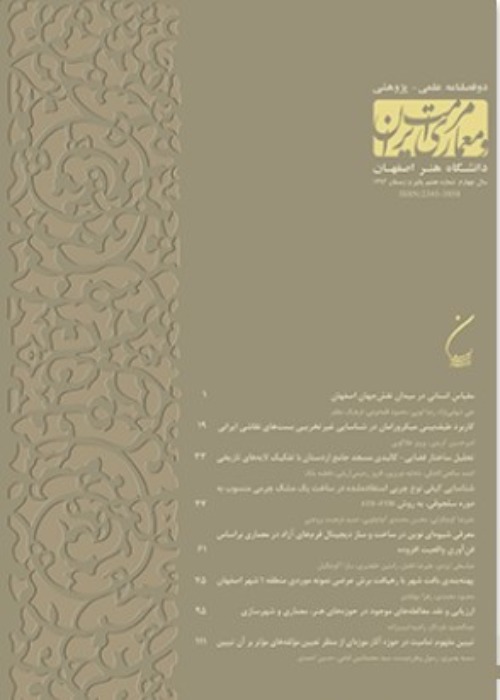Analysis of the Application of Behavior Setting Theory in Housing Behavior – Environment Studies (A Case Study of Rural Residential Environments)
The human living environment is formed by a combination of units of body-behavior, called behavior setting with the characteristics of permanent behavioral patterns, physical container and time period. Behavior setting in urban housing has a suitable spatial separation and mainly without spatial and temporal overlap, but, in rural housing, despite its simple appearance, there is a special entanglement between behavioral events and its physical container along with time components that causes the simultaneous use of space and time for behavioral events in the housing environment. Therefore, due to the importance of the subject, in this article, the behavior setting theory was specifically used in the behavior- environment study of rural housing with an analytical view. According to the theoretical foundations of the research, features such as: setting activity, people included, enclosed space, time period of setting activity, time and space sequence of settings, separation and aggregation of settings have been studied in the housing environment. Due to the nature of the problem, in the first stage, the descriptive research method was used to illustrate the behavioral settings. The sub-branches of descriptive research method, survey and cross-sectional method were used, which in order to collect data on the characteristics of behavioral settings in a period of one-month, targeted theoretical sampling was used. In the second phase of this study, the data collected in different parts of the characteristics of behavioral settings were analyzed, and then, the data were reviewed based on observation and interview based on open, axial and selective coding of the research method were reviewed. The research data were obtained from tools used for photographing and capturing spatial planning maps and diagrams of behavior settings, and then interviewing and analyzing the observations. The research findings are described in regards to the influence of people performing activities on setting organization, time and space of activities, setting separation, setting aggregation, setting spatial sequence, setting time sequence, setting spatial characteristics, and setting spatial distances. According to the main purpose of the research, the theory of behavior setting has been developed in the study of behavior-housing environment and the methodology of this research can be applied in the “Rural Analysis and Design” course. In conclusion, based on the table of characteristics of behavior sites, there should be three general thematic categories including: 1) General characteristics of the behavior setting, 2) Features related to the system of activities, and 3) Spatial characteristics of the settings should be considered, each of which can be divided into five sub-categories.
- حق عضویت دریافتی صرف حمایت از نشریات عضو و نگهداری، تکمیل و توسعه مگیران میشود.
- پرداخت حق اشتراک و دانلود مقالات اجازه بازنشر آن در سایر رسانههای چاپی و دیجیتال را به کاربر نمیدهد.


